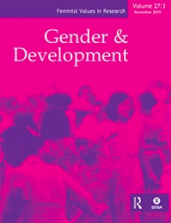Women’s movements under women presidents: bringing a gender perspective to the legal system

Overview
Few women have risen to the ranks of heads of state or government worldwide. The low numbers of female presidents and prime ministers in world history have left many untested assumptions about the impact of female leadership on the lives of fellow women. This article builds upon two bodies of work – studies of female presidencies, on the one hand, and on women’s movement-building, particularly in South and South-East Asia, on the other – to focus on the relationship between women leaders and women’s movements. Utilising case studies of national law reform during the presidencies of Corazon Aquino (1986–1992) and Gloria Macapagal Arroyo (2001–2010) in the Philippines and Megawati Sukarnoputri (2001–2004) in Indonesia, and drawing from key informant interviews in both countries, I argue that when women lead, women’s movements employ particular strategies to catalyse the passage of ‘women-friendly’ legislation. Examples of law reform illustrate the power of the female vote to sway presidential decision-making and the flow-on effect of a president who values the participation of fellow women in the government bureaucracy. Yet the relationship between female presidents and the success of movements is neither clear-cut nor linear. Women’s movements face opportunities and limitations under the leadership of women presidents, often having to compromise their agendas to achieve a united front.
Keywords
Additional details
Author(s)
How to cite this resource
Citation styles vary so we recommend you check what is appropriate for your context. You may choose to cite Oxfam resources as follows:
Author(s)/Editor(s). (Year of publication). Title and sub-title. Place of publication: name of publisher. DOI (where available). URL
Our FAQs page has some examples of this approach.
